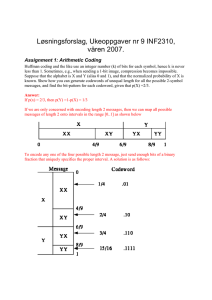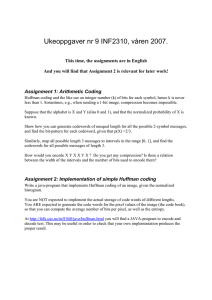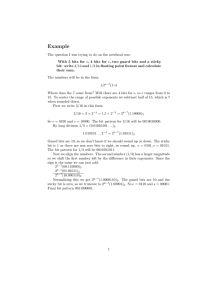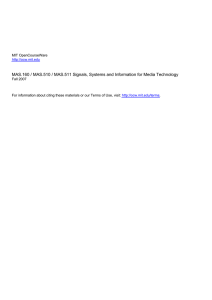Math 480/690 +Special Topics in Coding Theory Section 201
advertisement
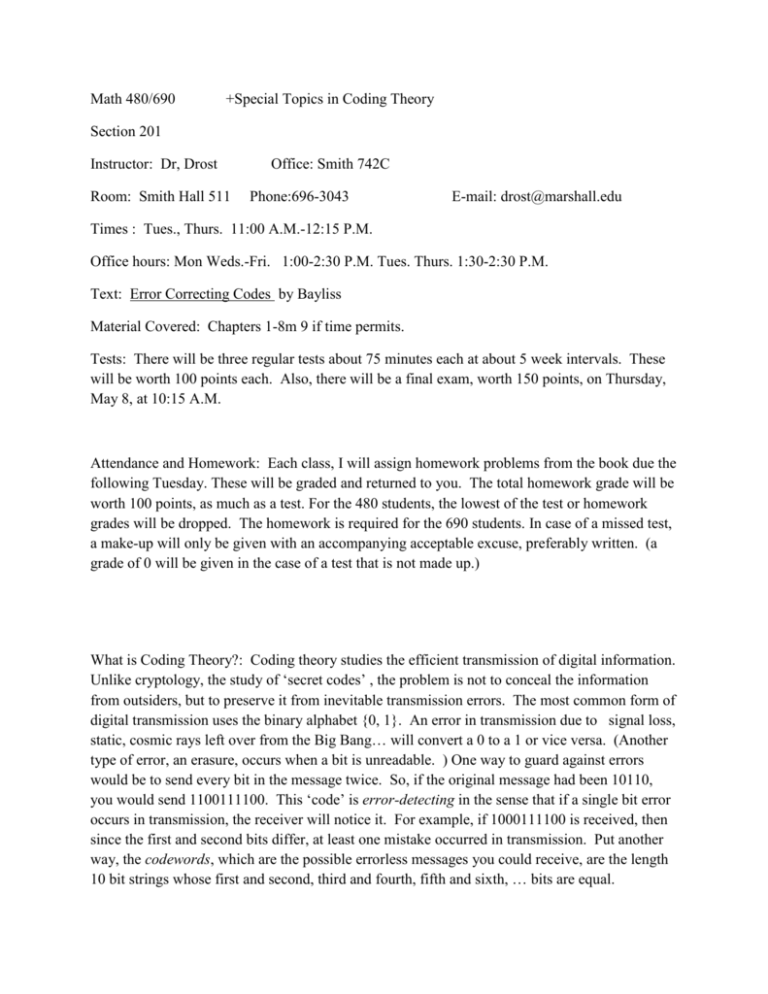
Math 480/690
+Special Topics in Coding Theory
Section 201
Instructor: Dr, Drost
Room: Smith Hall 511
Office: Smith 742C
Phone:696-3043
E-mail: drost@marshall.edu
Times : Tues., Thurs. 11:00 A.M.-12:15 P.M.
Office hours: Mon Weds.-Fri. 1:00-2:30 P.M. Tues. Thurs. 1:30-2:30 P.M.
Text: Error Correcting Codes by Bayliss
Material Covered: Chapters 1-8m 9 if time permits.
Tests: There will be three regular tests about 75 minutes each at about 5 week intervals. These
will be worth 100 points each. Also, there will be a final exam, worth 150 points, on Thursday,
May 8, at 10:15 A.M.
Attendance and Homework: Each class, I will assign homework problems from the book due the
following Tuesday. These will be graded and returned to you. The total homework grade will be
worth 100 points, as much as a test. For the 480 students, the lowest of the test or homework
grades will be dropped. The homework is required for the 690 students. In case of a missed test,
a make-up will only be given with an accompanying acceptable excuse, preferably written. (a
grade of 0 will be given in the case of a test that is not made up.)
What is Coding Theory?: Coding theory studies the efficient transmission of digital information.
Unlike cryptology, the study of ‘secret codes’ , the problem is not to conceal the information
from outsiders, but to preserve it from inevitable transmission errors. The most common form of
digital transmission uses the binary alphabet {0, 1}. An error in transmission due to signal loss,
static, cosmic rays left over from the Big Bang… will convert a 0 to a 1 or vice versa. (Another
type of error, an erasure, occurs when a bit is unreadable. ) One way to guard against errors
would be to send every bit in the message twice. So, if the original message had been 10110,
you would send 1100111100. This ‘code’ is error-detecting in the sense that if a single bit error
occurs in transmission, the receiver will notice it. For example, if 1000111100 is received, then
since the first and second bits differ, at least one mistake occurred in transmission. Put another
way, the codewords, which are the possible errorless messages you could receive, are the length
10 bit strings whose first and second, third and fourth, fifth and sixth, … bits are equal.
If 1000111100 is received, it is equally likely (assuming the two types of bit errors are
equally likely) that the message sent was 0000111100 or 1100111100, so we cannot tell what
the intended message was. If it was feasible, you would ask for retransmission and hope no
errors occur this time. If it wasn’t, you could instead require that every bit be sent three times.
Now, if a block of three bits like 101 is received, it is more likely that one error occurred and 111
was sent, than two errors occurred and 000 was sent. In this way, this code is (single) errorcorrecting.
Both of these ‘repetition’ codes are inefficient in the sense that a lot of bits are sent that
are not part of the original message. We will study ways of creating error-correcting and –
detecting codes. More and more algebraic tools will be needed as we go along, but we will
develop the background in finite arithmetic, linear algebra, and polynomials as we need it.
Error-correcting codes are used wherever digital information is present. Cellular phones, CD
players, computer ahrd drives, and satellite communications are just some of the places they are
used.

